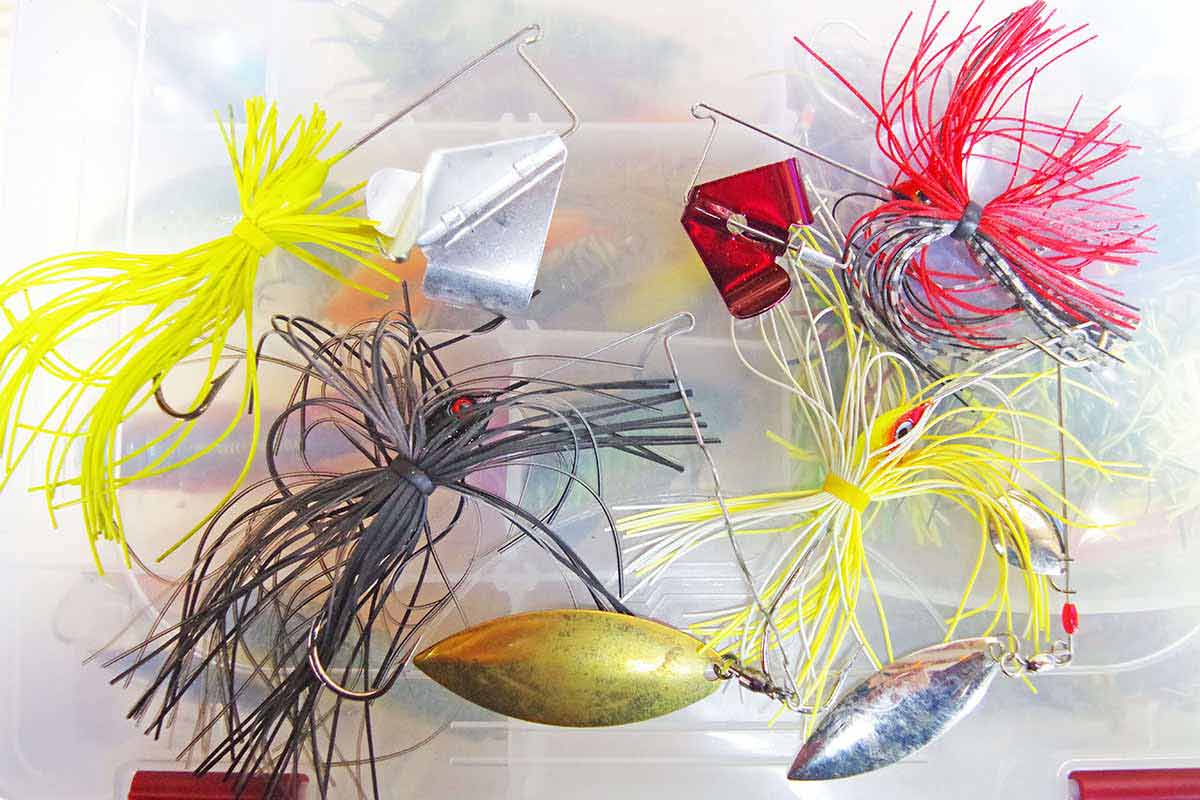
When it comes to finding bass, buzzbaits and spinnerbaits allow anglers to cover a lot of water quickly.
Bob Frye/Everybody Adventures
The Bassmaster Classic has crowned a champ.
It wasn’t me. It probably wasn’t you either.
The check would have been nice, but that’s OK. Fishing is still fun. Especially if you’re finding bass consistently.
And that’s possible.
You just have to remember that, with fish as with people, it’s all about being comfortable.
With bass in particular, be they largemouths or smallmouths, comfort comes from hanging around cover that offers what they want and need.
“Bass are object-oriented creatures,” said Bobby Uhrig, the New Jersey-based professional bass fisherman and lure designer behind Megastrike Inc. “So 90 percent of the fish are in 10 percent of the water. And they’re there for three reasons: food, comfort and shelter.”
Some areas, then, are chock full of fish, he said. Others have few or none.
He has a system for telling which is which.
Namely, he fishes several styles of lures in a progression.
“When I’m in a tournament with money on the line, I’ll spend my first two hours with a buzzbait,” Uhrig said.
Largely weedless, buzzbaits are a great search bait, he said. He fishes them in a pattern, casting to 12 o’clock, then 11, 10, and 9 and 1, 2 and 3. He spends about five minutes casting to each spot on the clock.
Running them over the top of weeds, reeling as soon as they hit the water, is how he identifies active fish.
“I want to eliminate as much unproductive water as I can as fast as I can, and a search bait like a buzzbait covers a lot of water quickly,” Uhrig said.
They often produce well.
“Not only will you catch numbers of fish on this, you’ll catch giants, too,” Uhrig added.
If a buzzbait isn’t finding bass, he’s got one other search bait he tries. That’s a spinnerbait.
Some research done by Berkley years ago determined that 4-inch baitfish are most preferred by bass, Uhrig said. Spinnerbaits mimic that perfectly.
He fishes them either just below the surface or, by letting them sink after casting, just above the top of grass and other cover. All that’s needed to make them work is a steady retrieve.
“Anybody can do this. It’s not rocket science,” Uhring said.
Once he knows there are bass in an area, he often switches to three other rigs to catch bass.
One in a shaky head jig.
First designed by Japanese bass fishermen, the shaky head works because of how it presents a bait, Uhrig noted.
He used to do a lot of underwater photography and videography. The point was to see how baits actually looked under water.
One thing he found was that many, if allowed to settle to the bottom, disappear. When they lie horizontally, they vanish in the muck of mud and decaying leaves.
“You just can’t see them,” Uhrig said.
Shaky head jigs rigged with a soft plastic trailer keep that plastic standing vertically. A small crayfish trailer on a shaky head, especially in spring, looks just like a crayfish in natural defensive position, Uhrig said.
Bass can’t help but eat it, he added.
The key is to keep the shaky head deep.
“You want to maintain contact with the bottom. You want to keep it along the bottom,” he said.
Another setup he uses for finding bass is a drop shot.
Dropshooting works with really light baits by keeping them just above the bottom, Uhrig said. He’ll put a ball or bell weight on the end of his line, then add a #1 baitholder hook 12 to 18 inches above it. To that he adds a soft plastic worm.
“You want the weight to hit the bottom. Then what you’re going to do is just shake that worm right in front of that fish’s face,” Uhrig said. “You can cover a lot of water with this quickly.”
There’s one critical thing to remember, though.
“The most important thing with a dropshot is you have to take the slack out of it. You don’t want that worm sitting on the bottom,” Uhrig said.
When he feels his weight hit the bottom, he lifts his bait just a bit so there’s tension on the line. Then he drags it along, giving it the occasional shake to entice bass to bite.
What’s great is how adaptable the rig is.
“You can fish these things in 4 feet of water. Or you can fish these things in 40 feet of water,” Uhrig said.
The third bait he often tosses when he’s on fish is a wacky-rigged soft plastic stickbait, like a Senko.
He puts a #1 baitholder hook through the middle of the bait. He tosses is on a spinning rod spooled with 6- to 10-pound test.
The idea is to throw the bait out, count – remembering at what number or depth the fish are striking – then shaking it.
The bait looks just like a dying baitfish that’s on its side, fluttering in its last moments.
“It poses no threat to the fish. It’s not loud, it’s not obnoxious. It just looks like an easy meal,” Uhrig said. “And it’s so simple to use.”
You’ve just got to get on the fish first. So search them out, then reel them in.








